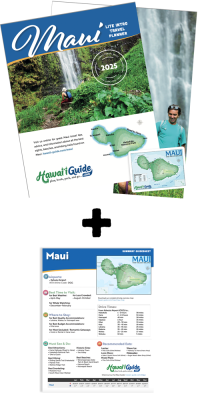Black Sand Beach Maui
Waianapanapa State Park
Maui’s famous black sand beach, named Honokalani and located in Waianapanapa State Park about three miles north of the town of Hana, is more than just a beach. It was historically a very important place for Hawaiians, and there are various Hawaiian legends about this place – it is deemed as sacred by the Hawaiian people. The park itself comprises of 122 acres, encompassing the beach, lava caves, wind-twisted foliage, Hawaii’s largest known heiau (temple), stone arches, and blow holes. The park is very interesting to hike through, and there are even a few wet, spring-fed sea caves and lava tubes.
New Reservation Systems & parking fees for visitors
Reservations for all visiting tourists and commercial vehicles will be required for entry to Maui’s Waianapanapa State Park as of March 1, 2021.
For visitors, reservations will be taken up to two weeks in advance, and no same-day reservations will be accepted.
Parking fees for out-of-state visitors will be $10; while walk-ins, bicyclists, or visitor drop-offs will be a $5 entry fee per person. Prices are higher for commercial vehicles.
Hiking and Facilities
Look for the trail signs beyond the beach access point to the left to locate the wet caves and lava tubes. To the southeast the Waianapanapa Coastal Trail goes all the way to Hana town, and along this trail about a mile down, is the Ohala Heiau, and you will also see the blowhole on the way. Many seabirds frequent the area and Waianapanapa is a great spot for bird watching enthusiasts. Camping is allowed here although a permit is required and can be obtained through the DLNR. The Waianapanapa State Park also has twelve cabins available that can be rented. For daytime visitors, there are restrooms and picnic areas, but no lifeguards.
FREE 2025 DOWNLOADS
Maui Intro Visitor Guide
+ Our Summary Guidesheet!
Includes the top must-see & do attractions, best times to visit, a monthly weather & visitor summary, and our tips on how to save when booking your car rental, tours, and activities. Plus, grab our free Maui Summary Guidesheets.
Black Sand
A black sand beach is truly a magnificent sight, formed by lava flow that has cooled, hardened, and then fractured into tiny pieces by the relentless battering of the ocean waves over thousands of years. This is why you will see a variety of rounded, smoothed pebbles as well as the coarser – and in some areas – fine – black sand. In ancient Hawaii, people would collect the larger pebbles to use for the flooring of their dwellings.
Framed by colorful tropical plants and nestled between black lava cliffs, the beach is perfect for that unique photo opportunity, especially when the light is right. Waianapanapa means “glistening water,” and you can easily see how it earned this name if you visit on a sunny day when the waters are illuminated by the light and contrasted beautifully against the jet-black sandy beach. The sand is also glittery as the sun shines on it. It is quite a breathtaking sight.
Swimming is dangerous here and should be mostly avoided, unless the ocean is calm, which is a rare event only in the summertime. Caution should be taken at all times as fierce rip currents can sweep through the bay, and the ocean bottom drops off quite close to shore.



